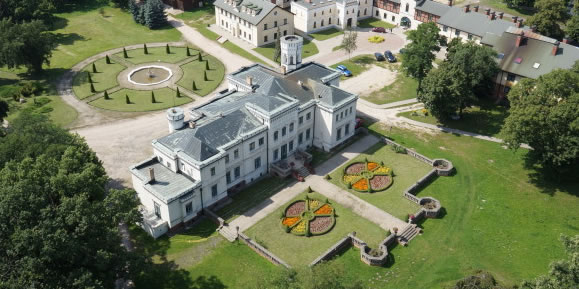Conversatory of Centre of Applied Mathematics
PROGRAM
26.10.2012 A.J. Maciejewski (UZ), "Zagadnienie N-cial i dynamika nowo odkrywanych ukladow planetarnych/wielogwiezdnych" ("N-body problem in mathematics and astronomy: dynamics of old and new discovered systems) Abstrakt: Wykład poświęcony jest omówieniu podstawowych własności zagadnienia N-ciał oraz problemów matematycznych z nim związanych. Rozpatrzymy klasyczne grawitacyjne zagadnienie N punktów materialnych oraz różne jego warianty (ograniczone zagadnienia oraz zagadnienie Hilla). Przedstawię problem konfiguracji centralnych oraz problem osobliwości niezderzeniowych. Jednym z ważnych zastosowań zagadnienia N-ciał jest badanie dynamiki i wyznaczanie parametrów planet oraz ich orbit w pozasłonecznych układach planetarnych. Przedstawię problemy związane z tego typu zastosowaniami. Istotną rolę w zastosowaniach odgrywają również warianty zagadnienia N-ciał, w których jedno lub kilka ciał są obiektami rozciągłymi (np. bryłami sztywnymi). Zagadnienia dwóch brył sztywnych stosuje się na przykład do badanie dynamiki podwójnych asteroidów. Pokażę jak jakościowo zmienia się skala trudności gdy przechodzimy od zagadnień punktowych N-ciał do zagadnień rozciągłych N-ciał. 11.12.2009 Piotr Wojdyllo (IMPAN) "Acoustic Simulation of Interiors and Its Applications." Motivated by the applications for compression and study of subjective quality of the sound, we investigate the diffusion models of sound propagation in the enclosures composed of different materials. The diffusion model embraces the effect of sound delay when propagating through the material and performs well in case of reverberation times that are important properties of the enclosure. The computational complexity of the method is reasonable when compared with the state-of-art. 20.11.2009 prof. Andrzej Królak (IMPAN) Poszukiwanie fal grawitacyjnych Abstrakt: Przestawie jedno ze zjawisk przewidywanych przez ogolna teorie wzglednosci mianowicie fale grawitacyjne oraz metody wykrywania tych fal. Ze wzgledu na to, ze amplitudy fal grawitacyjnych sa niezwykle male ich wykrycie jest ogromnym wyzwaniem dla statystycznych metod detekcji sygnalow. Przedstawie szereg matematycznych narzedzi i algorytmow numerycznych, ktore optymalizuja problem detekcji sygnalow fal grawitacyjnych i estymacji ich parametrow. Zaprezentuje zastosowanie tych metod do analizy rzeczywistych danych z dzialajacych obecnie detektorow fal grawitacyjnych. 29.05.2009 Stefano Olla (CEREMADE, France) Macroscopic non-equilibrium evolution of a system of anharmonic oscillators20.05.2016, godz. 15.00, Prof. Piotr Gwiazda (UW i IMPAN), Age-structured population model of infectious disease spread applied to data on varicella prevalence in Poland
Abstract:
Dynamics of the infectious disease transmission is often best
understood taking into account the structure of population with
respect to specific features, in example age or immunity level.
Practical utility of such models depends on the appropriate
calibration with the observed data. Here, we discuss the Bayesian
approach to data assimilation in case of two-state age-structured
model. This kind of models are frequently used to describe the disease
dynamics (i.e. force of infection) basing on prevalence data collected
at several time points. We demonstrate that, in the case when the
explicit solution to the model equation is known, accounting for the
data collection process in the Bayesian framework allows to obtain an
unbiased posterior distribution for the parameters determining the
force of infection. We further show analytically and through numerical
tests that the posterior distribution of these parameters is stable
with respect to cohort approximation (Escalator Boxcar Train) to the
solution. Finally, we apply the technique to calibrate the model based
on observed sero-prevalence of varicella in Poland.















